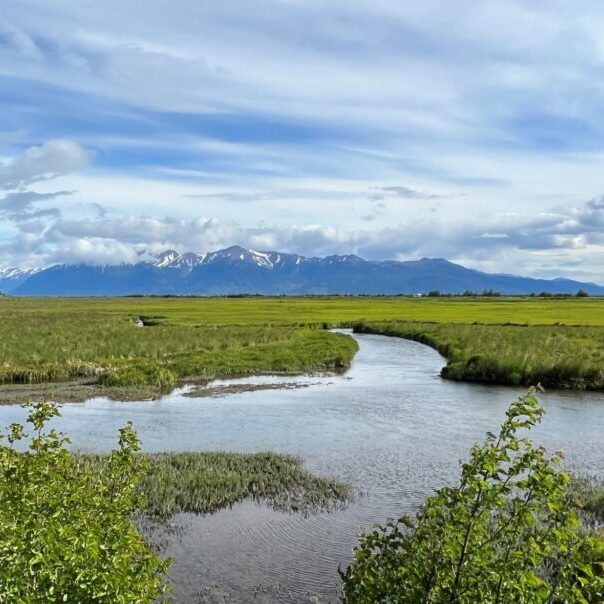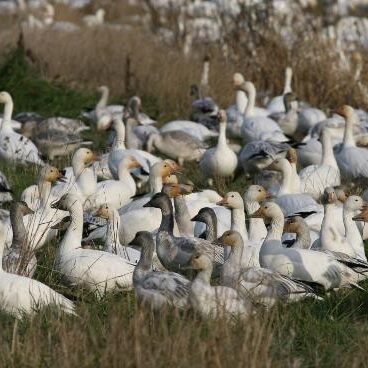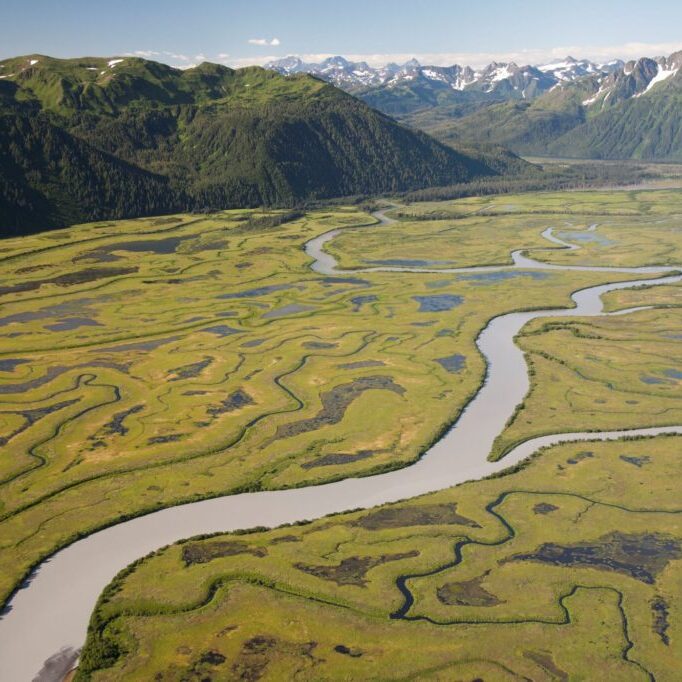Flyways—the life giving, ancient pathways for birds from their breeding grounds to wintering areas—are an integral part of the bird migration story.
The Pacific Americas Flyway, spanning from Alaska to the tip of South America, supports millions of migratory birds. Western Sandpiper, Pacific Loon, Pacific Brant, and hundreds of other species follow this general north-south route in spring and fall. Some of our other breeding birds, such as Sandhill Crane, Lesser Scaup and Greater White-fronted Goose, migrate further to the east along the Central or Mississippi Flyways.
The Bar-tailed Godwit, Pacific Golden-Plover, and Bristle-thighed Curlew, among others, take a different route and travel the West Pacific and East Asian-Australasian Flyways. These journeys take them across vast stretches of the Pacific Ocean.
World Flyway Map

Some birds cannot be pinned down to one or even two flyways. The Blackpoll Warbler breeds in the boreal forest, then migrates east across Canada before dropping south to the Atlantic Ocean and over to South America, and the Northern Wheatear visits both Alaska and Africa during its annual migration.
Wherever they land, birds need healthy habitats to sustain them. Pacific Birds is working with partners to assess where those habitats are and to identify the key conservation actions that will allow our birds to continue making their epic migrations.
Flyway News
NAWCA awards in Alaska and Washington will benefit migratory birds and wetlands
Last week, the Department of the Interior announced over $87 million in funding for the Migratory Bird Conservation Fund and North American Wetland Conservation Act grants. Two of the accepted projects are within the Pacific Birds service area and represent a substantial investment in coastal wetland habitats and migratory birds.
Flying with Snow Geese: How new tracking data are helping protect the Fraser River estuary
If you spend any time near the Fraser and Skagit River deltas, you may have seen Snow Geese (Anser caerulescens) with orange faces. These individuals are significant when it comes to protecting the largest and most important estuary in British Columbia, and not just because of their unique coloration.
Three videos exploring Alaska’s wetlands, people, and birds
Taking viewers to incredible but remote locations, this three-part video series on Alaska’s coastal wetlands features the towns and scenery of Cordova, Wrangell, and Yakutat, Alaska, and shares stories of the relationship between people, birds, and the land.



